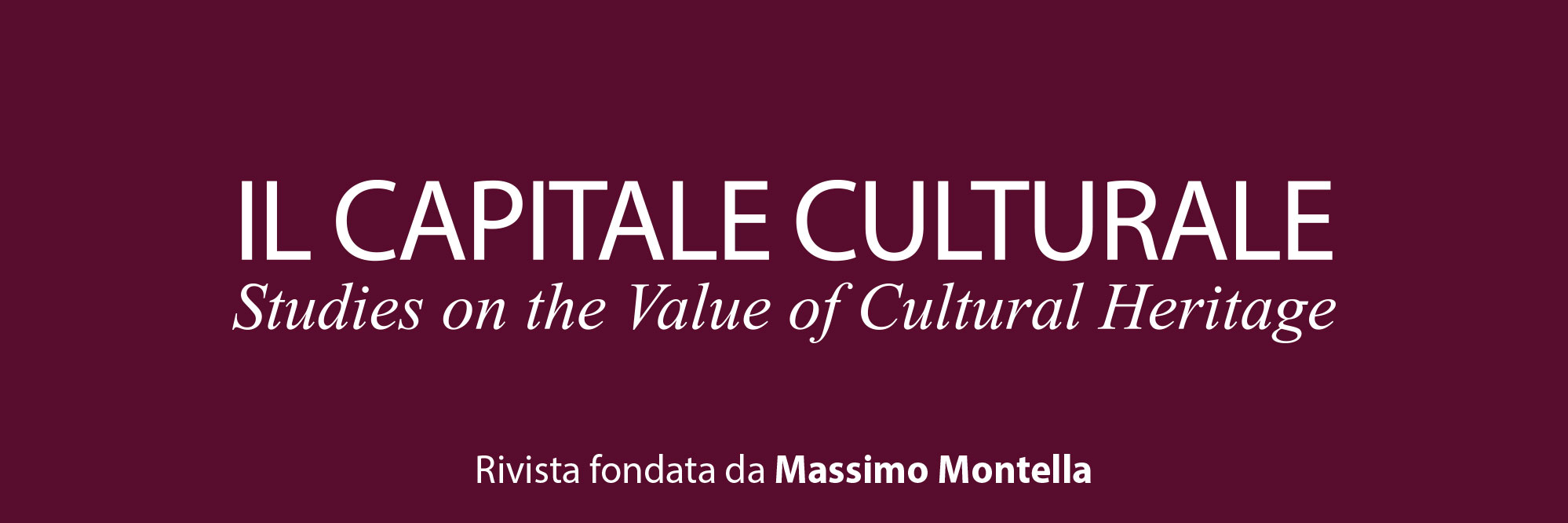Hybris and Sacrificium. Aby Warburg and Ovid’s Metamorphoses in Imagery
Downloads
Pubblicato
Fascicolo
Sezione
Licenza
Tutti i materiali pubblicati sono coperti da copyright, mantenuto dall'Università di Macerata che ne supporta finanziariamente e tecnicamente la pubblicazione.
La licenza adottata è la Creative Commons - Attribuzione/Condividi allo stesso modo. Ovvero, gli autori che pubblicano su questa rivista accettano le seguenti condizioni:
- Gli autori mantengono i diritti sulla loro opera e cedono alla rivista il diritto di prima pubblicazione dell'opera, contemporaneamente licenziata sotto una Licenza Creative Commons - Attribuzione che permette ad altri di condividere l'opera indicando la paternità intellettuale e la prima pubblicazione su questa rivista.
- Gli autori possono aderire ad altri accordi di licenza non esclusiva per la distribuzione della versione dell'opera pubblicata (es. depositarla in un archivio istituzionale o pubblicarla in una monografia), a patto di indicare che la prima pubblicazione è avvenuta su questa rivista.
- Gli autori possono diffondere la loro opera online (es. in repository istituzionali o nel loro sito web) prima e durante il processo di submission, poiché può portare a scambi produttivi e aumentare le citazioni dell'opera pubblicata.
DOI:
https://doi.org/10.13138/2039-2362/3499Abstract
The dialectic between Hybris and Sacrifice – which is deeply rooted in Greek tragedy – is ever-present in Ovid’s Metamorphoses and influenced the final years of Aby Warburg’s research towards the end of the 1920s. The German scholar had chosen the survival of Classical Culture, Nachleben der Antike, as the basis for his research, and found Ovid’s Metamorphoses to be a fundamental source of study on the original value of myths. The Ovid-Austellung was a small photographic exhibition ran in the oval room of the new library – the Kulturwissenschaftliche Bibliothek Warburg in Hamburg – to be held from the twenty-ninth of January to the sixth of February 1927. The notes – now kept at the Warburg Institute Archives in London – reveal it was Warburg’s decisive intention to focus on the wide-ranging subject of cultural migration in ancient myths, in terms of time and space, through images.
Riferimenti bibliografici
Benjamin W. (1971), Il dramma barocco tedesco, Torino: Einaudi.
Benjamin W. (1974-1989), Die Bedeutung der Sprache in Trauerspiele und Tragoedie, in Gesammelte Schriften, edited by R. Tiedemann, H. Schweppenhäuser, Frankfurt: Surkhamp.
Cassirer E. (2021), The Philosophy of symbolic forms, vol. 2, Abingdon, Oxon: Routledge.
Cieri Via C. (2002), Orfée, Ovide et les “Pathosformeln” à l’antique, in La naissance de l’Opera. Euridice 1600-2000, edited by F. Decroisette, F.Graziani, J. Heuillon, Paris: L’Harmattan, pp. 313-335.
Cieri Via C. (2004), Un’idea per le Metamorfosi di Ovidio, in Lo Sguardo di Giano. Aby Warburg fra tempo e memoria, edited by C. Cieri Via, P. Montani, Torino: Aragno, pp. 305-343.
Cieri Via C. (2010), Aby Warburg e il dramma barocco, «Aisthesis. Pratiche, linguaggi e saperi dell’estetico», II, 2, pp. 31-43.
Cieri Via C. (2011), Il sacrificio di Polissena come rituale del sangue. Aby Warburg e la sopravvivenza di un topos antico, in Homère à la Renaissance. Mythe et transfigurations, Paris: Somogy Éditions d’Art, pp. 105-124.
Cieri Via C. (2011), Introduzione a Aby Warburg, Roma-Bari: Laterza.
Cieri Via C. (2013), Warburg, Rembrandt e “Il percorso dei salti del pensiero”, «Schifanoia», 42-43, pp. 32-55.
Herrmann Fiore K., edited by (1997), Apollo e Dafne del Bernini nella Galleria Borghese, Cinisello Balsamo: Silvana Editoriale.
Pinotti A. (2005), La sfida del batavo monocolo. Aby Warburg, Fritz Saxl, Carl Neumann sul Claudius Civilis di Rembrandt, «Rivista di Storia della Filosofia», 3, pp. 493-530.
Pucci G. (2016), Il mito di Medea, Torino: Einaudi.
Segal C. (1995), Orfeo. Il mito del poeta, Torino: Einaudi.
Warburg A. (1930), Illustrierte Ausgaben von Ovids Metamorphosen im XV. XVI Jahrundert, in Vorträge der Bibliothek Warburg, edited by F. Saxl, Leipzig-Berlin: B.G. Teubner, pp. 58-144.
Warburg A. (2006a), La Rinascita del Paganesimo antico e altri scritti (1917-1929), edited by M. Ghelardi, Torino: Aragno.
Warburg A. (2006b), L’antico italiano nell’epoca di Rembrandt, in La Rinascita del Paganesimo antico e altri scritti (1917-1929), edited by M. Ghelardi, Torino: Aragno, pp.405-654.
Wedepohl C. (2012), Von der “Pathosformel” zum “Gebärdensprachatlas” Dürers Tod des Orpheus und Waburgs Arbeit an einer ausdruckstheoretisch begründeten Kulturgeschichte, in Die entfesselte Antike. Aby Warburg und die Geburt der Pathosformel, edited by M. Andrew Hurttig, C. Wedepohl, Köln: Wallraf-Richartz-Museum & Foundation Corboud, pp. 33-50.




